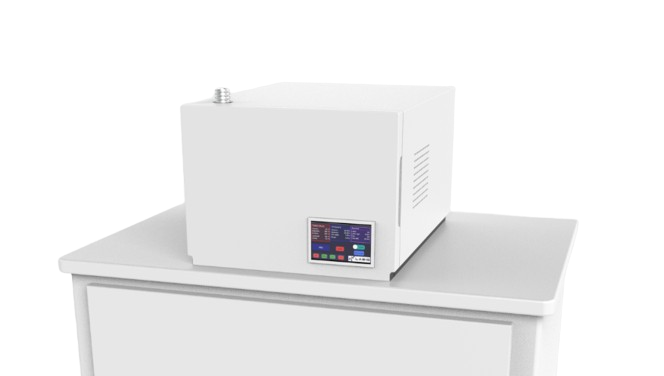Gas Chromatography with Ultraviolet Detection (GC-UV) vs. Gas Chromatography with Vacuum Ultraviolet Spectroscopy (GC-VUV): Advantages of GC-UV

While Gas Chromatography-Vacuum Ultraviolet Spectroscopy (GC-VUV) is recognized for its advanced detection capabilities, Gas Chromatography with Ultraviolet Detection (GC-UV) remains a popular choice due to certain practical advantages, such as cost-effectiveness, faster analysis times, and simpler operation. In this article, we’ll explore the key benefits of GC-UV over GC-VUV and the specific circumstances where GC-UV might be the more attractive option.
1. Cost-Effectiveness and Accessibility
One of the primary advantages of GC-UV is its cost-effectiveness. The technology behind ultraviolet (UV) detection is well-established and relatively inexpensive compared to vacuum ultraviolet (VUV) detectors, which require sophisticated equipment and maintenance. UV detectors are widely available, and initial investment costs for setting up GC-UV systems are significantly lower.
In contrast, GC-VUV systems are often more expensive to purchase and maintain due to the need for specialized components to work in the vacuum ultraviolet range. These systems require higher precision, including the use of vacuum chambers, high-energy light sources, and sensitive detectors that can handle short wavelengths of light.
For many routine analyses, where high specificity is not a necessity, GC-UV provides sufficient sensitivity and reliability at a fraction of the cost. Laboratories with budget constraints or that don’t require the high-level resolution offered by GC-VUV may find GC-UV to be a better fit for their needs.
2. Simplicity of Operation
GC-UV is a simpler and more user-friendly technique compared to GC-VUV. The equipment involved is easier to operate and maintain, and technicians require less specialized training. Most UV detectors are plug-and-play, with straightforward calibration and minimal technical adjustments needed during operation.
On the other hand, GC-VUV systems can be more technically challenging to operate due to the complex setup required for vacuum ultraviolet detection. The detectors often need more careful handling, and the optical systems require regular calibration and maintenance to ensure accuracy. Moreover, the data processing for GC-VUV can be more complex, given the three-dimensional spectral data it generates, requiring specialized software and training to interpret the results correctly.
For laboratories looking for a solution that is easy to implement and manage, GC-UV provides an attractive, user-friendly alternative.
3. Faster Analysis Times
Another key advantage of GC-UV is its ability to provide faster analysis times compared to GC-VUV. In GC-UV, the detection focuses on a specific wavelength range (typically between 200-400 nm), and the system can quickly capture absorbance data as compounds elute from the gas chromatograph. The two-dimensional spectral data (time vs. absorbance) generated by GC-UV is easier to process, allowing for rapid results.
In contrast, GC-VUV produces three-dimensional spectral data (time, absorbance, wavelength), which provides more detailed information but can slow down the overall analysis process. The additional layers of data can require longer processing times and more computational resources to extract meaningful results. While GC-VUV’s complex spectral information is invaluable for certain types of analysis, it can limit throughput when compared to GC-UV, especially for routine or high-volume testing.
4. Three-Dimensional Data in GC-UV
While GC-VUV is often recognized for generating three-dimensional spectral data, GC-UV can also produce three-dimensional data—time, absorbance, and wavelength—by utilizing diode array detectors (DAD). These detectors allow the system to measure absorbance across multiple wavelengths simultaneously, providing a broader spectral profile for each compound eluting from the column. This three-dimensional data can still be quite useful for compound identification and quantification, especially in cases where UV-active functional groups are present.
Though the range of compounds detected by GC-UV may be more limited compared to GC-VUV, the three-dimensional data from UV absorbance is often enough for applications involving compounds with conjugated bonds, aromatic rings, or other UV-absorbing moieties. This allows GC-UV to handle many types of analyses without the need for the more complex and expensive VUV detection.
5. Ideal for Routine and Simple Analyses
GC-UV excels in applications where routine analysis of samples is needed without the requirement for high-resolution detection or the ability to resolve isomers. For compounds that have strong UV absorption, GC-UV can deliver rapid, reliable results with minimal effort. Common applications include:
- Environmental testing (e.g., monitoring of pollutants like benzene or toluene)
- Pharmaceutical quality control, where certain drugs or impurities exhibit UV absorption
- Food and beverage analysis, particularly for compounds like polyphenols or additives with UV-active properties
These routine analyses can be performed much more quickly and cost-effectively with GC-UV than with GC-VUV, which would provide more detailed information than necessary for these simpler tasks.
6. VUV’s Potential Drawbacks: Cost and Slower Processing
While GC-VUV offers unparalleled advantages in compound identification, its drawbacks include the following:
- High Cost: As mentioned earlier, GC-VUV systems are more expensive to purchase, operate, and maintain, due to the specialized components involved. For many laboratories, the high cost-to-benefit ratio may not justify the use of GC-VUV unless they are dealing with complex or challenging samples that require the advanced features of VUV detection.
- Longer Processing Times: Although GC-VUV can speed up certain analyses by reducing GC runtimes through flow rate-enhanced chromatographic compression, the detailed three-dimensional spectral data requires longer processing times compared to simpler GC-UV setups. This can become a bottleneck for high-throughput environments, especially if VUV-level resolution is not strictly necessary.
Conclusion
While GC-VUV offers significant advantages in terms of detection range, specificity, and resolution—particularly for distinguishing isomers and complex mixtures—it may not always be the best choice for every application. GC-UV, with its cost-effectiveness, ease of use, and faster analysis times, remains a highly attractive option for routine analyses and simpler applications. Laboratories that prioritize budget, speed, and practicality without the need for highly detailed molecular data will find GC-UV to be a more suitable and efficient solution.
In summary, the choice between GC-UV and GC-VUV depends largely on the complexity of the samples being analyzed and the specific requirements of the analytical process. For many day-to-day applications, GC-UV strikes the perfect balance between simplicity and performance.
